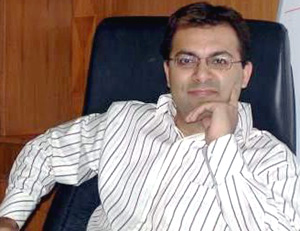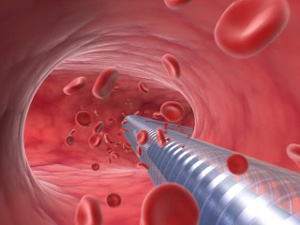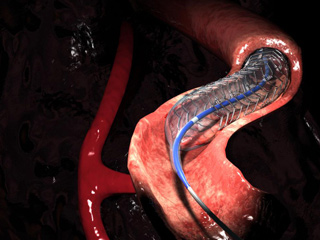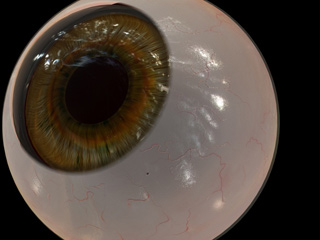 “The worldwide medical industry is only just beginning to discover the true potential of 3d”
“The worldwide medical industry is only just beginning to discover the true potential of 3d”
Please elaborate on the usage of simulation and 3D animation for Medical purposes?
At its core, 3D animation is a better way to communicate that which is visually complex. In entertainment, CG is used to create a visual world that enhances the viewing or gaming experience. In science, CG can help take the viewer into a world beyond reach — to the depths of the ocean, the far reaches of the universe, or into microscopic regions of the human body. At Scientific Animations and Graphics, we help the US and UK medical industry with the gamut of their communication needs. 3D is used by medical device and pharmaceutical companies throughout the product lifecycle. 3D can be used to educate doctors, sales force employees or patients. It is common today in marketing exhibitions and conferences. Sophisticated 3d animation can be integrated with box models to even produce real-time simulation for surgeon training. The worldwide medical industry is only just beginning to discover the true potential of 3D.
How different is it from entertainment related CG animation?
The fundamentals of 3D animation for medical are similar to those of entertainment. The production process is similar, as are the tools and general approach. However, a few key differences separate medicine from entertainment. The main ones e are that:
Medical animation tends to focus more on texturing and modeling and less on animation. The animation challenges are in the areas of particle animation and dynamics as opposed to character animation. Clients are as focused on the accuracy and communication of the medicine as they are on the aesthetics. The average project is 2-3 minutes in length with projects being complete in 4-8 weeks.
As a result, at SA&G, we do no almost no rigging or character animation. We focus on models, textures, environments and animation that will meet the clients need for aesthetics and accuracy. We are also very focused on learning the medicine, as a base level of domain expertise is needed to ensure a quality output. Medical animation is not for everyone; our animators look at videos of live surgeries, research the topic of their animations and have to learn in-depth medical terminology. Our animators could teach many doctors a thing or two about some cutting-edge medical technologies. It is, in many ways, as challenging as CG in entertainment, but the focus is quite apart.
 “Our animators could teach many doctors a thing or two about some cutting-edge medical technologies”
“Our animators could teach many doctors a thing or two about some cutting-edge medical technologies”
What is the kind of work that generally comes down to India? What’s the potential like?
The work that SA&G brings to India is primarily from end-users, not from outsourcing relationships. As a result, SA&G does all aspects of medical animation, from storyboarding through post-production. Currently, most of this work is either straight 3d animation, or basic interactive media. In the future, as India proves itself as a reliable provider, this could expand into complex interactive CDs or real-time simulation tools, but this would be in the medium to long term.
India has great potential to provide CG in medicine to the world. Currently, less than 0.1% of the US medical animation market is done in India, according to our estimates. Furthermore, we believe the global market for 3D animation in medicine is growing at between 30-40% per annum, making it one of the fastest growing segments within CG.
India has the talent and resources to take advantage of this, but it requires a different approach than that to entertainment. The intense nature of the client interaction means that companies would need to invest in building up a US infrastructure to do sales, marketing and pre-production. They would also need to ensure they had enough domain expertise to be credible in the US market. For example, at SA&G, all of our sales are done by our US director, who is an ex-director of Johnson and Johnson. His credibility in the industry has been crucial in establishing the Scientific Animations brand.
 “SA&G has been able to enlarge the medical animation market, allowing clients to take advantage of 3D who could not previously afford it”
“SA&G has been able to enlarge the medical animation market, allowing clients to take advantage of 3D who could not previously afford it”
What are the new emerging trends that you see in the medical simulation space?
Medical simulation only has one way to go. It will become increasingly full-colour 3D and increasingly real-time. Currently, box models implanted with electrodes are connected to 3d animation so that surgeons practicing a procedure can see the effects of their actions on the simulator – much like a pilot in a flight-simulator. However, as graphics improve, real-
time simulators can provide feedback during actual surgery, and help doctors to make procedures progressively less invasive, and more automated. Less invasive, better controlled surgeries mean less trauma to the patient, less hospital time, less insurance dollars and quicker recovery times. Much of this is still in the future, but some is already happening.
For example, in the past, CT scans were two-dimensional, black and white cuts. Now, they can be assembled into full-colour 3D computer models. In the future, these graphics could be used widely, not just for diagnosis, but for actual surgery and in a way that integrates a particular company’s product with a procedure. In this way, companies become true partners with medical practitioners, helping them to improve patient care.
How long has Scientific Animations and Graphics been in the field? What are the latest developments at your end?
SSA&G has been in the field for almost two years. In two years, we have established ourselves with end-user pharmaceutical and medical device companies and proved that we can produce the level of quality required to compete directly in the US market. Our clients range from multi-billion dollar medical companies like Johnson and Johnson and Guidant to venture capital funded startups. Because we provide high end CG services at a competitive price, SA&G has been able to enlarge the medical animation market, allowing clients to take advantage of 3D who could not previously afford it.
With an established brand name, we are expanding into the outsourcing market, and further into the interactive training markets. We are also currently experimenting with producing an educational CD for public consumption.
 “The Indian economy is currently firing on all cylinders, and everybody wants to be a part of the India story”
“The Indian economy is currently firing on all cylinders, and everybody wants to be a part of the India story”
What are the other non-entertainment applications for 3D? What should India do to capture those markets?
Medical animation is just the beginning of what India can do in the extra-entertainment space. Many industries such as auto-parts manufacturing, architecture or other scientific and technical industries require 3D animation and modeling. Even lawyers need 3D for many patent lawsuits. All of these areas provide opportunities for dedicated, focused companies. But I feel that focus is the key in all areas, even in entertainment. We need to pick something, do it well, and establish a brand, whether it’s VFX, Medical, character animation, etc. Too often, I see other small Indian companies that are unfocussed, and as a result, provide mediocre quality to all the markets they service. That ends up hurting brand India overall. The Indian economy is currently firing on all cylinders, and everybody wants to be a part of the India story. The business will come to India, but we have to be able to deliver quality by focusing on building our expertise in specific areas.
